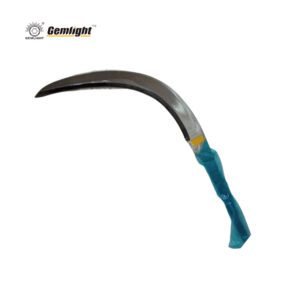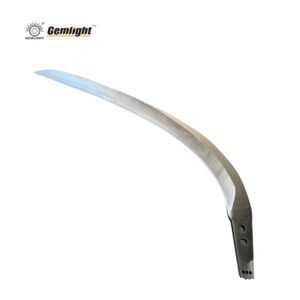1. Introduction to the African Machete: History and Cultural Value
The African machete is more than just a cutting tool; it is a cultural icon rooted in generations of practical use. Traditionally forged for agricultural and domestic tasks, the African machete reflects the values of craftsmanship and community embedded in rural life. Across various regions in Africa, the machete has served as a universal implement—used by farmers, herders, and laborers to clear vegetation, harvest crops, and build shelters. Its adaptability makes it a fundamental tool in both subsistence and commercial farming.
With deep roots in tribal societies and agricultural communities, African machetes come in several forms, each influenced by local demands and available materials. From the curved Panga to the straight-edged Tapanga, these variations mirror regional craftsmanship. Passed down through generations, the African machete is not only a practical tool but a symbol of resilience and self-sufficiency. Its prominence continues today in both traditional and industrial farming operations.
In the modern era, the African machete has also gained global recognition. Its sturdy design and versatility have found a place in gardening, bushcraft, and survival markets worldwide. Yet, it remains most meaningful in its homeland, where it is still used daily by millions for essential work. Understanding the machete’s heritage offers buyers more than a product—it delivers a piece of African history.

2. Key Features and Common Types of Africa Machete Blades
Africa machetes are built for power, durability, and functionality in tough environments. When evaluating these tools, buyers must consider several important features: blade shape, material, length, weight, and handle design. Each of these elements affects performance and suitability for specific tasks.
The most iconic type is the Panga machete, widely used across sub-Saharan Africa. It has a broad, curved blade ideal for heavy chopping and clearing dense brush. Another popular variation is the Tapanga machete, which features a straight spine and forward-weighted tip, offering superior striking force. These designs evolved from practical needs, tailored to different vegetation and terrains.
Blade materials also matter. High carbon steel provides strength and edge retention, while stainless steel offers corrosion resistance. Blade length generally ranges from 14 to 22 inches, with longer blades favored for agricultural work. The handle should ensure a secure, comfortable grip—wood, plastic, and rubber are common options.
Africa machetes are often customized for specific crops and regional tasks. In sugarcane regions, specialized cane machetes with hook ends improve cutting efficiency. For forest clearing, bush machetes with broader blades are more effective. Understanding these variations allows users to select the best machete for their environment and workload.
3. Our Africa Machete Product Line: Quality, Custom, and Factory Price
We take pride in offering a diverse and professional range of Africa machete tools, manufactured to meet the demands of modern farming and forestry work. Our factory specializes in crafting robust, high-performance blades tailored for the African market. Our products combine traditional design with industrial-grade materials to deliver both reliability and affordability.
Our product line includes:
Panga Machetes: Broad, curved blades ideal for clearing brush and dense foliage. Tapanga Machetes: Straight-back design with a weighted tip for maximum chopping power. Cane Machetes: Hooked-end blades customized for harvesting sugarcane and similar crops. Two-Handed Machetes: Extended handle designs for increased leverage and reach.
Each machete can be customized with laser-etched logos, color-matched handles, and packaging that suits your brand. We offer OEM and ODM services to meet unique customer requirements, ensuring consistent quality through strict QC processes. Our manufacturing facility uses high carbon steel and hardened treatment to increase edge durability and blade strength.
With years of export experience to African markets, we understand regional preferences and adapt our models to meet the needs of local farmers. Whether you are sourcing for retail, wholesale, or government tender projects, our africa machete solutions offer unmatched performance at factory-direct prices. Partner with us for durable, proven tools that work as hard as your customers do.

4. How to Choose the Right African Machete for Your Needs
Choosing the right african machete starts with understanding the job at hand. Not all machetes are built for the same purpose, and selecting the correct blade type, material, and size ensures greater efficiency and safety. Here are key factors to consider:
1. Task Type: For heavy-duty clearing, a Panga or Tapanga machete provides the required weight and force. For harvesting, especially sugarcane or similar crops, a curved cane machete delivers precision cuts.
2. Blade Length: Longer blades (18–22 inches) are suitable for large-scale agricultural work, while shorter blades offer more control for garden and household use.
3. Handle Comfort: Ergonomic grips reduce hand fatigue and improve handling. Choose materials that are weather-resistant and provide a firm hold, such as rubberized or contoured wood handles.
4. Blade Material: Opt for high carbon steel if edge sharpness and durability are priorities. Stainless steel is ideal for wet or humid conditions due to its rust-resistant nature.
5. Weight Distribution: Weighted tips, as found in Tapanga designs, help in delivering powerful swings, making them better for chopping thick wood.
When sourcing for resale or project supply, also consider packaging, safety sheaths, and customization options. Bulk buyers benefit from suppliers that understand both the technical and cultural expectations surrounding african machetes.
—
5. What Is an African Machete Called?
The term African machete covers a broad category of blades used across the continent, but specific names vary by region and function. The most commonly known variant is the Panga, characterized by a wide, curved blade and heavily used in southern and eastern Africa. In West Africa, similar machetes may be referred to as bush knives or jungle blades, though the design often remains consistent.
Other local names may include references in native dialects or trade languages, with each term reflecting how deeply embedded the machete is in rural life. While outsiders often generalize all these blades as african machetes, locals typically identify them by their specific design or purpose.
In international markets, African machetes are categorized by their blade geometry—such as straight-edge, hooked, or forward-curved. These distinctions help manufacturers and buyers classify machetes based on cutting power, reach, and durability. Regardless of the name, each variation serves a distinct purpose shaped by generations of hands-on experience.

6. What Is a Panga in Africa?
A Panga is a specific type of african machete widely used in Africa for agricultural, construction, and household tasks. Its signature feature is a broad, curved blade that tapers to a sharp point, offering a powerful cutting edge. The Panga is particularly effective in clearing brush, cutting woody stems, and harvesting crops like maize and sugarcane.
The design of the Panga enhances weight distribution toward the blade’s front, increasing chopping power with each swing. This makes it a preferred choice in bush environments where vegetation is thick and tough. Its size typically ranges from 16 to 20 inches in blade length, with robust handles for two-handed use if necessary.
In many African countries, the Panga is not just a tool but a daily companion. Farmers, workers, and even schoolchildren carry Pangas for various chores, highlighting its indispensability. Its cultural relevance is reflected in local art, folklore, and even politics, where it symbolizes strength and self-reliance.
Modern Panga machetes now come with upgraded materials and manufacturing standards, making them more durable and efficient. For international buyers, sourcing genuine Panga designs ensures authenticity and performance that meet real-world demands.
About us:
Dingzhou Gemlight Cutting Tools Co., Ltd.,With a solid foundation since 1990, Gemlight machete is a trusted name in the field of cane machete manufacturing. We focus on R&D, design and production to produce high quality wholesale china machete and shovel,hoe,pickaxe,sickle,farm tools.
Gemlight Machete factory Based in Baoding, Hebei, China, we benefit from efficient logistics and fast delivery. Our products have been well received in more than 50 countries, thanks to our commitment to customer satisfaction








